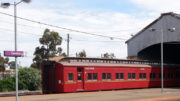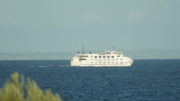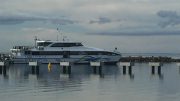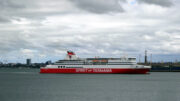Residents of Corio and Port Philip Bay are often envious of Sydney’s superb ferry network, but there was a time when ferries ruled our bays. Known as the bay steamers, these vessels were a popular way to transit between Melbourne, Geelong and Portarlington.
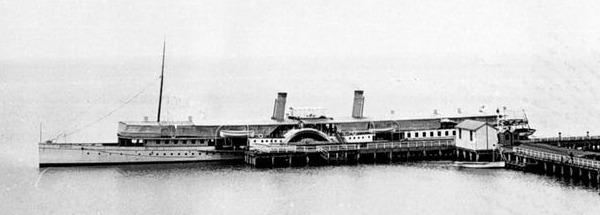
The first steamers started operating between Melbourne and Geelong around the 1840s. At the time there was no rail line, the automobile was a long way off and the Geelong Waterfront was filled with tall ships and a lot more piers than you find there today.
One of the first piers that the steamers started using was Queens Wharf, one of the first such structures built in Geelong, today part of this wharf remains and is located alongside the Geelong Yacht Club. It soon became clear that a larger facility was needed and work began on the Moorabool Street Pier in 1849. The pier was to be short and wide, perfect for steamers to pull up along each side with a decent sized terminal building in the middle. Because of the gold rush it took quite a while for the new pier to be built due to labour shortages, with construction completed around 1855. Its iconic timber federation style terminal building was built a few years later and some say is the inspiration behind the current structure on Cunningham Pier. Sadly a fire broke out on the pier in 1933 and while the pier survived, the much loved two level terminal building was later replaced by two smaller and plain single level buildings.
By the 1940’s the steamer service was facing stiff competition from trains and the motor car with the last steamer operating to Geelong in 1942. In 1949 the now disused pier that stood at the end of Moorabool Street was demolished ending any hope of the steamers return.
Today the steamers that once graced our waterfront are still fondly remembered, names like the Aphrasia, Courier, Edina, Hygeia, Ozone and Weeroona only remain today in old photos, drawings, models and as local street names. Some were lost to accident, some were sunk as an artificial reef, breakwater or even used as land fill. The most iconic of these is the Ozone, whose remaining paddle wheel can be still seen sticking out of the water in Indented Head.
In recent years there have been calls to bring back the ferries to Geelong and Portarlington. Supporters of the Portarlington to Melbourne ferry plan have been the most vocal and even gained some interest from the Victorian government with the first stages of the Portarlington Safe Harbour Project funded and constructed. The Safe Harbour Project saw pier and breakwater extensions around the current pier as well as extra berths for commercial and recreational boats. Today this new pier is home to the new Portarlington ferry service, future pier upgrades will see a covered walkway constructed on the pier to the beach to shelter ferry passengers from bad weather.
Today’s ferry started as a trial in August 2016 by a privately-run passenger ferry service known as Port Phillip Ferries. Operating a 35m catamaran known as the Wyndham Explorer, the ferry service originally started by linking Wyndham Harbour, Werribee South to Docklands in Melbourne. Due to low commuter patronage from Werribee South the timetable was adjusted to focus on Portarlington, much to the excitement of local residents. The trial proved such a success that it has led to a permanent ferry service to Portarlington along with a new purpose built vessel known as the Bellarine Express.
While the Portarlington Ferry plan may have some benefits (the distance on water to Melbourne is shorter than to Geelong and there is no rail service) the possibility of returning a ferry to Geelong is today has often been viewed as a challenge. While the ferries of the early 20th century saw millions of passengers, it must be remembered that the road to Melbourne of the time was little more than a dirt track and very few people had cars. To be a viable transit service today it would need to compete with cars and the train on price as well as speed. Alternatively the new service would focus on great service and tourism, and it looks like the later is what will be the target when a 3 year trail of Geelong to Melbourne ferries start in early 2019 thanks to a government investment of $6 million. The operators behind the Portarlington ferry are investing in a new state-of-the art high speed ferry to run on the Geelong trial. With room for 400 people, an on-board licenced cafe and plenty of open space, it is hoped that the service will be not only popular with tourists but also commuters who want a leisurely change from being crammed into a crowded train.

